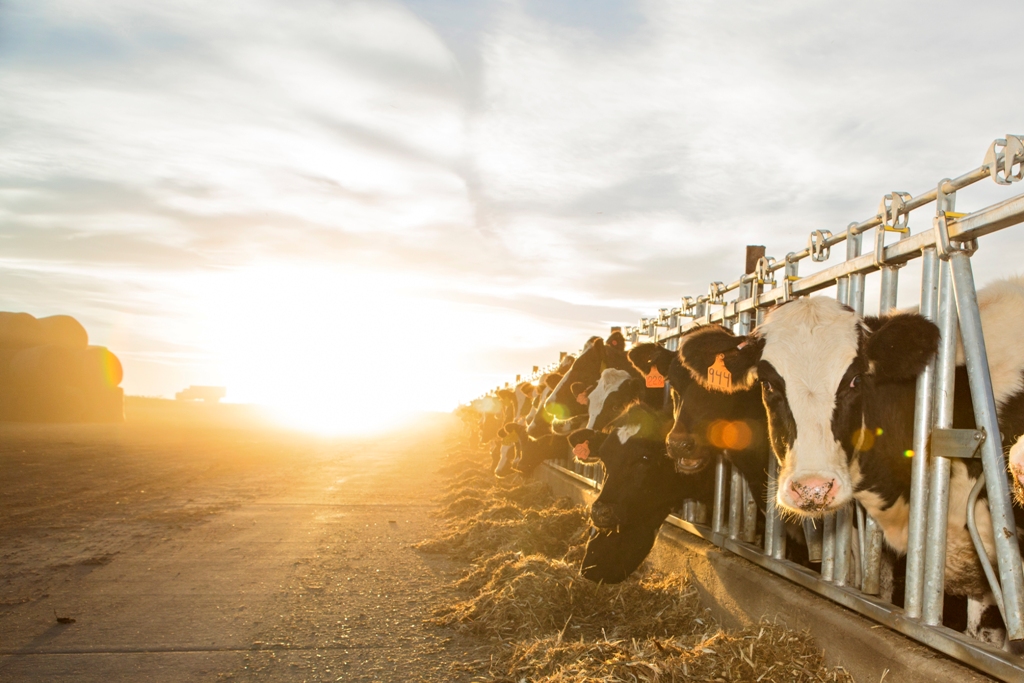Sustainability is nothing new to dairy farmers, who have been producing more with less resources for generations. But following a year with so much uncertainty, the dairy industry and animal agriculture can count on consumers being more interested in choosing foods produced with care for the environment. This has been a trend before the COVID-19 pandemic, with 70% of adults making purchase decisions based on sustainability (Hartman, 2019), and continues to be more relevant today.
On the other side of the sustainability coin, it’s important for farmers to stay informed about dairy markets. Dairy MAX partnered with Colorado Livestock Association to host leading experts in sustainability and dairy pricing analysis to expand on issues facing the industry today.
The webinar, “Hedging for a Sustainable Future”, featured Frank Mitloehner, Ph.D., professor and air quality extension specialist at University of California, Davis, and Mark Stephenson, Ph.D., director of dairy policy analysis at University of Wisconsin-Madison. 112 attendees were present, including dairy farmers, producers from other ag commodities, industry professionals and members of ag media.
“Providing opportunities for farmers to hear from industry experts has always been a priority for dairy checkoff,” said Marty McKinzie, Dairy MAX vice president of industry image and relations. “Although travel restrictions have made it challenging to be together in-person, webinars make it possible for us to continue connecting and providing relevant information.”
Mitloehner kicked off the webinar by setting the record straight on livestock, specifically dairy’s, greenhouse gas emissions and role in climate change. Mitloehner has built a career on bridging the gap between animal agriculture and the environment, communicating research and dispelling common misconceptions through the CLEAR Center at UC Davis and his active Twitter account @GHGGuru.
Mitloehner focused his presentation on the “methane myth” that tends to surface around cattle and the climate change conversation. The average consumer hears about cows producing methane, which is a potent greenhouse gas, and draws the conclusion that cattle are the problem – but Mitloehner points out that is not the full story.
What these claims against animal agriculture fail to account for is how methane behaves in the atmosphere. While carbon dioxide enters the atmosphere and sticks around for centuries, methane is a flow gas that is produced but also breaks down naturally in the atmosphere. Mitloehner points out this distinct difference in greenhouse gases is crucial to animal agriculture’s narrative, and why livestock emissions cannot be compared to fossil fuels without the appropriate context.
“We can’t let people compare cows to cars – it’s a flawed discussion,” said Mitloehner. “If we have constant cattle herd numbers, we are not adding additional methane and therefore not adding additional warming to our atmosphere.”
According to Mitloehner, advances in the dairy industry to increase productivity with less cows has allowed a significant reduction in carbon footprint.
“With 16 million fewer dairy cows, U.S. milk production has increased 60% and our carbon footprint is two-thirds smaller,” said Mitloehner. “Trends like this are the only way we will meet the challenge of feeding our growing global population by the year 2050.”
Stephenson followed with a presentation on “Pandemic, Prices and PPDs… What Will 2021 Offer?”. In his role as director of dairy policy analysis at University of Wisconsin-Madison, Stephenson conducts research for the dairy industry, including milk assembly costs, new processing technologies and price risk management.
His presentation highlighted the ways U.S. markets have moved milk during the pandemic to meet rising consumer demand. Even with shutdowns affecting foodservice, most consumers returned to the comforts of cooking at home with fluid milk, cheese and butter – causing retail dairy purchases to stay up after the jump at the beginning of the pandemic.
“Dairy markets managed to reconfigure quickly at the beginning of the pandemic to meet heavy demand, and have continued as domestic consumption has stabilized,” said Stephenson.
In looking ahead this year and beyond, Stephenson pointed out that bright spots for dairy remain in export opportunities, the Farmers to Families Food Box program and re-opening of restaurants and schools.
While everyone continues adjusting to a “new normal”, the dairy industry remains committed to reducing its environmental footprint while ensuring milk and other dairy foods are available to nourish communities. The information presented by Mitloehner and Stephenson help lead the way in sharing dairy’s story and preparing farmers for the future.
Be on the lookout for future Dairy MAX webinar opportunities in 2021 to hear from other industry experts, partners and checkoff staff.




